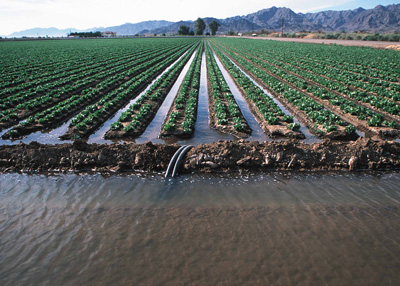
(Jeff Vanuga, USDA NRCS)
Irrigation. Federal and state-supported irrigation projects are the basis for much of agriculture in the Western United States. Yuma County, Arizona, for example, has a desert climate with extremely hot summers and warm winters. Yuma is one of the hottest cities in Arizona, with average July high temperatures of 107 °F. Average January highs are around 70 °F (21 °C). The area receives, on average, about 3 inches of rain annually. Irrigation has allowed farmers to produce a rich variety of fruits, vegetables, hay and grains even in this extreme environment.